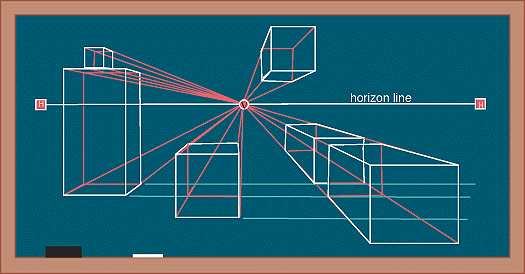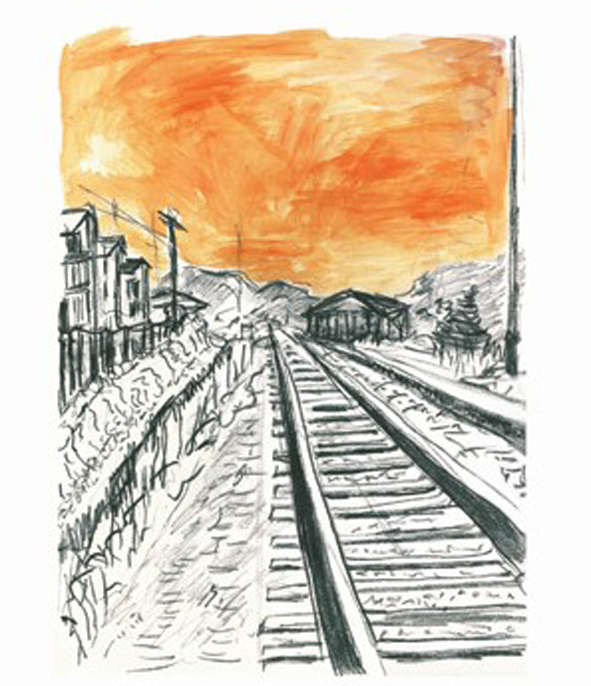DUE: Monday 10-7
Make a drawing of a road using one point perspective. Include the following elements in your drawing:
-vanishing point
-horizon line
-a repeating object that recedes into the distance (ie: trees, telephone poles, bushes, buildings)
-chiaroscuro (shading from light to dark, including drop shadow)


Baldassare Peruzzi, One-point perspective of a Roman street (1515)
Tom Bauer, photograph

Chris Gregory, pencil, watercolor
=====
===
=
===
=====
Juniors:
DUE : Tuesday, 10/10
Find a black and white photograph. Print it out on 8.5x11" paper. Use a ruler to draw a 1/4 inch grid over the picture. OR impose a 1/4 inch grid over the picture digitally before you print it. On a gridded piece of paper, recreate the image by filling in each square with the corresponding value. You can label the grids with letters or numbers on the y and x axis to make each square easier to locate. The end aesthetic should look like a highly pixelated version of the photograph.
 Chuck Close
Chuck Close
1973 cover of “Scientific American” on the left and Leon Harmon’s “Abraham Lincoln” (1973) on the right.
=====
===
=
===
=====
Seniors
DUE: (Kappa) Monday 10/14
DUE: (Omega) Tuesday 10/15
Make art in the style of the artist who you wrote your journal entry on. You can recreate a work by them, or create a totally original piece. If you create something totally original, you must be able to relate your project to your artist.
When relating to your artist, think about:
Their style/technique: what materials do they use? How do they use them?
Their concept/meaning: what are they trying to say? what conclusions do you come to about the meaning of their work? what was their intention in creating their work?
Their subject matter: What are they depicting (figures, objects, landscapes, abstraction)?
What stands out to you? What element of their work do you respond to most?
How were they representative of the time period they made work in? How would you represent your own time and culture?
No comments:
Post a Comment